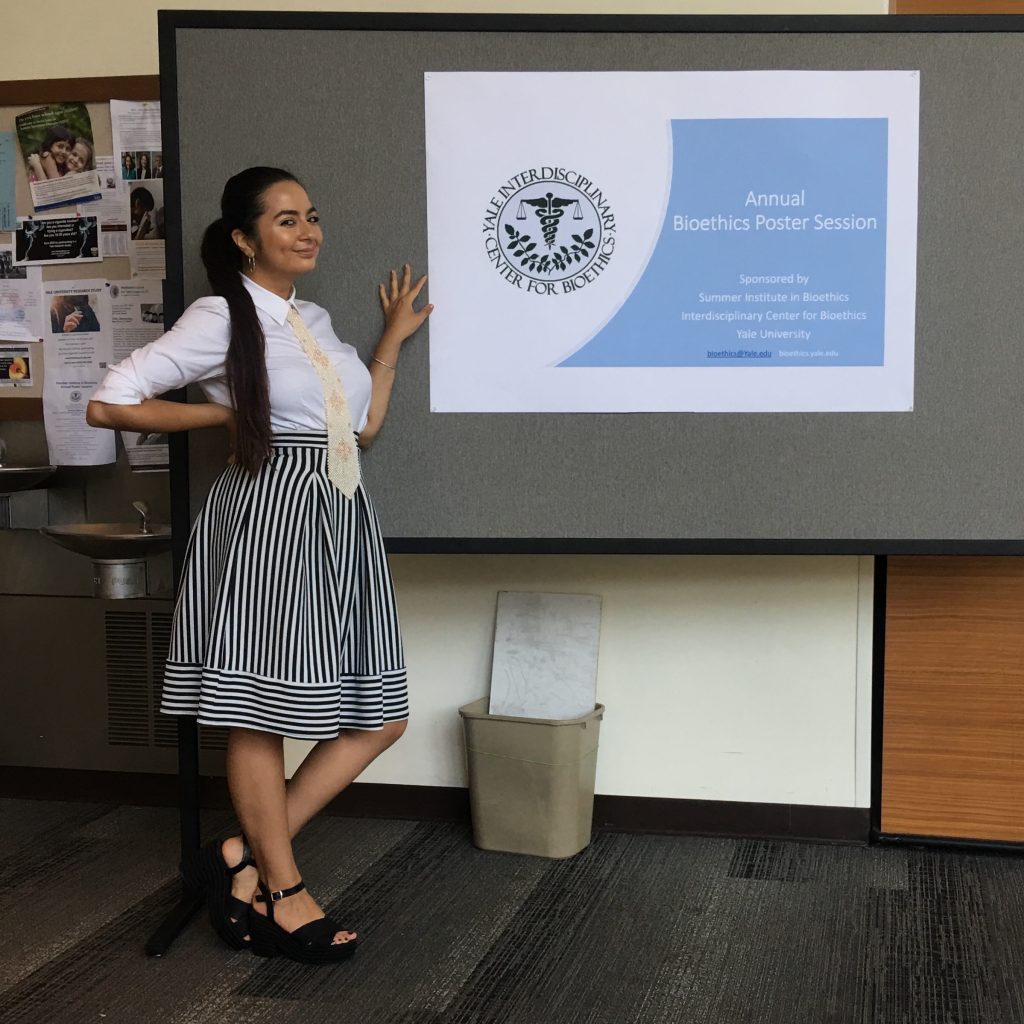My recent departure from New Haven has left me reeling with newfound knowledge, possibility, and ambition. Although I could write a hundred pages about my experience, I think it is prudent to discuss three specific events that underscore the pragmatic value of Yale’s Summer Institute in Bioethics. In my last blog, I discussed the structure of the program and the substance of my personal interactions. In this blog, I will discuss our two major fieldtrips, and the final poster presentations.

Our first field trip was to the Hastings Center. This is a gorgeous and reputable facility near Westpoint on the Hudson River which hosts scholars’ research, and publishes interdisciplinary bioethical research and review papers. We had the honor of attending multiple presentations by current scholars, and discussed with them topics ranging from the anti-vaccine movement to the medical cost of an aging prison population. For me, this was personally significant insofar as it opened a window for a possible gap year endeavor. After her presentation, I spoke to a current researcher about my Rollins thesis on advanced directives for euthanasia, and she invited me to apply for a research position.
My Neuroethics class also had the privilege of touring the Cushing Center in the Yale Medical Library. This is a museum of sorts memorializing the work of pioneer neurosurgeon Harvey Cushing. There is a fascinating and humorous story behind the museum’s creation. Allegedly, Cushing stored his hundreds of samples (literal brains in jars) in a basement of a building that would become the Yale medical students’ dormitories. Curious medical students discovered the brains, but as a result (and to preserve the samples), the basement was locked. Not to be deterred so easily, the students made pilgrimages through vents to view the brains, and it became so popular that Yale finally decided to put the brains on display, along with a large glass exhibit praising the life of Cushing himself. Some of the brains have since been used in experimentation. What made this visit significant to me is that it raised two major ethical concerns in and of itself: (1) Is it right to use and display brains without the consent of the owners? (Facets of this issue: the moral significance of brains versus other body parts, the lack of consent laws when they were acquired, and postmortem harm/potential harm to living family members.) (2) Should we praise the work of this man, as well as his life story, without acknowledging his racism/ableism and the harms he brought on diminished communities? (Facets of this issue: context, institutional racism, and continued harms to victims.) I still grapple with how I would address these concerns.

Finally, and most significantly, I had the privilege of presenting a poster of my research before the Yale Medical School as well as the esteemed speakers and professors of the Bioethics Institute. My research focused on bimaternal parenthood. For background, in late 2018, researchers were able to combine (in mice) a genetically-engineered female-derived embryonic stem cell with an egg, to produce viable, fertile offspring from two mothers. However, bipaternalism is currently unachievable. In my paper, I argue for continued research in bimaternalism and bipaternalism, with the ultimate goal of human implementation. I substantiate this with a Rawlsian analysis of societal equity, justice, and the four principles of bioethics.
I can say without embellishment or self-absorption that my presentation was successful. During and afterward, I was able to establish connections that will aid in the continued development of my paper. In turn, I plan to finetune it for real publication.
Thank you for aiding me in this journey. It was transformative in more ways than I could possibly describe in two blogs. For the SHIP team, I have only the deepest gratitude and appreciation.
